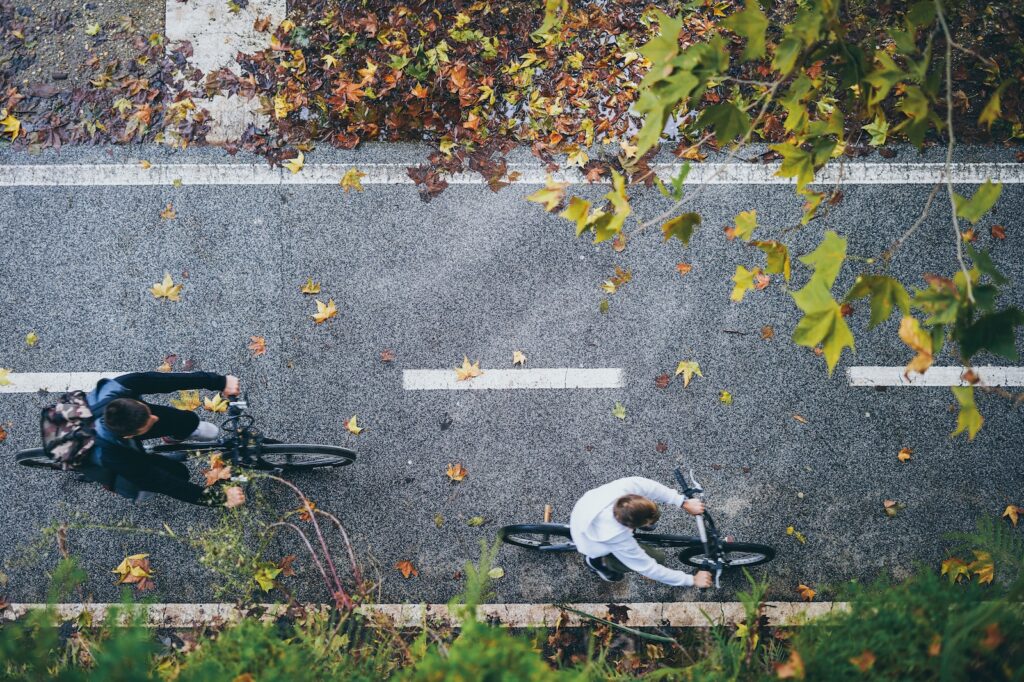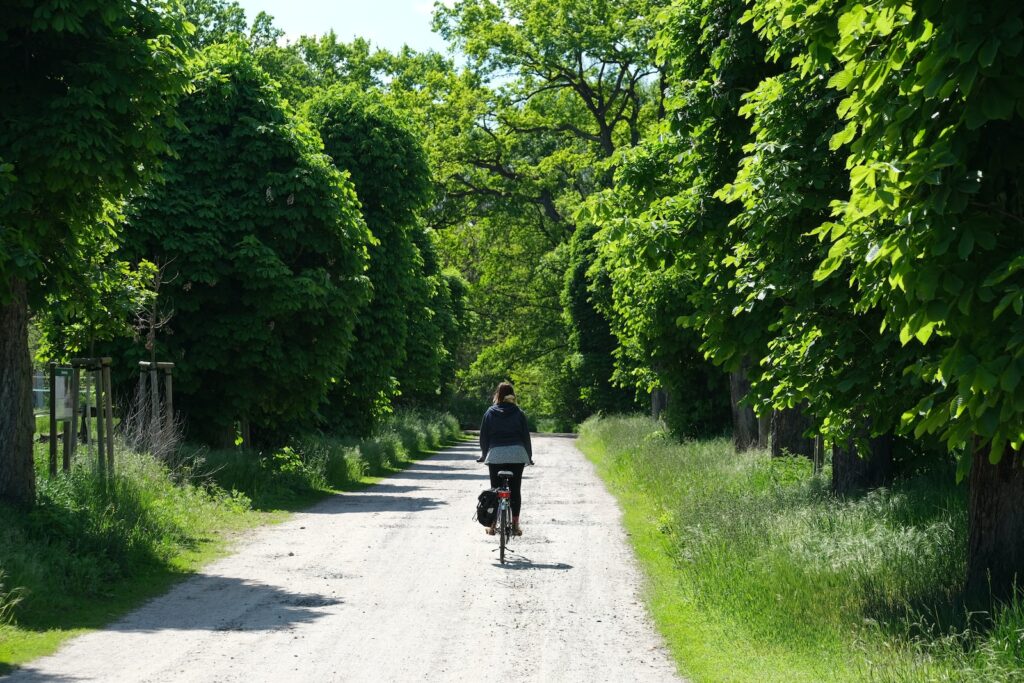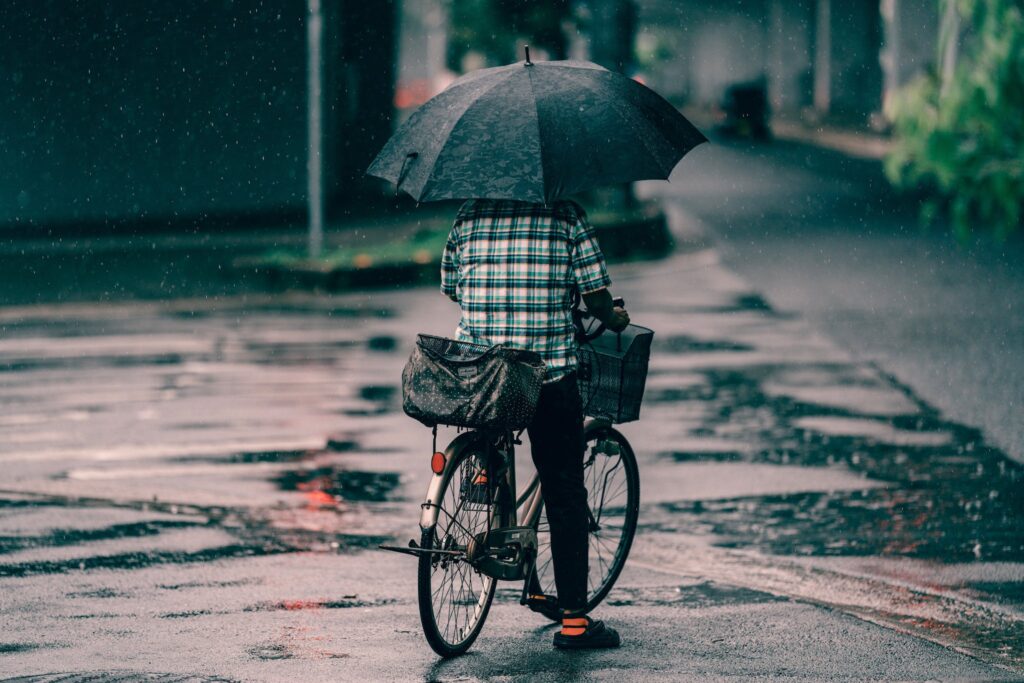Cars and bicycles were not made to ride together. As a bike commuter myself, I know firsthand the importance of having safe and reliable bike lanes. I don’t like to share the road with cars, whose drivers are often more focused on their morning coffee than on the road, which can make you feel like a sitting duck in a pond of steel sharks.
Fortunately, with the rise of cycling as a popular mode of transportation, cities around the world are recognizing the need for modern bike infrastructure that supports the needs of bike commuters. Bike lanes, therefore, are becoming increasingly popular, with Europe serving as a prime example. Sharing the road with cars is a thing of the past; now, bike lanes and protected bike lanes are paving the way for the future.

Table of Contents
What is the purpose of the bike lane?
Modern bike lanes are more than just a painted stripe on the road. The purpose of a bike lane is to provide a dedicated and safe space for cyclists on roads, separate from vehicular traffic. This segregation helps in reducing the risk of accidents and conflicts between bicycles and motor vehicles, which can occur when both share the same roadway.
They incorporate design principles that prioritize the safety and comfort of cyclists, making it easier and more appealing to choose biking as a mode of transportation. From protected bike lanes that physically separate cyclists from vehicular traffic to pop-up bike lanes that respond to the needs of the community, modern bike infrastructure is paving the way for a more sustainable and safe future.
Types of Bike Lanes
There are almost as many types of bike lanes as types of bicycles, each designed to offer varying degrees of safety and separation from vehicular traffic:
- Standard Bike Lanes: These are marked with painted lines on the roadway, designating a specific area for cyclists, typically on the right side of the road.
- Buffered Bike Lanes: Similar to standard lanes but with extra space marked by lines or hatching between the bike lane and the adjacent motor vehicle travel lane or parking area to provide greater separation from cars.
- Contraflow Bike Lanes: These allow cyclists to ride in the opposite direction of one-way traffic on certain streets, usually indicated by distinctive markings.
- Protected (or Separated) Bike Lanes: They are physically separated from motor traffic by barriers, such as curbs, planters, parked cars, or bollards, offering a higher level of protection.
- Bike Boulevards: These are low-speed streets that prioritize bicycle traffic and discourage cut-through motor traffic.
- Shared Lane Markings (Sharrows): These are road markings used to indicate a shared lane environment for bicycles and cars, reminding motorists that cyclists have the right to the lane.
- Bike Boxes: These are designated areas at the front of a traffic signal intersection that provides bicyclists with a safe and visible way to get ahead of queuing traffic during the red signal phase.
- Advisory Bike Lanes: These are lanes where motor vehicles are allowed to enter the bike lanes only when no cyclists are present, typically found on narrow, low-volume streets.
The Evolution of Bike Lanes: A Journey through Time
As cycling becomes an increasingly popular mode of transportation, cities around the world are investing in bike lanes to support their growing number of bike commuters. While bike lanes may seem like a modern concept, they have actually been around for over a century. In this section, I will take you on a journey through time to explore the evolution of bike lanes.
Lessons from Europe
Europe has long been a leader in cycling infrastructure, with cities like Copenhagen and Amsterdam boasting some of the highest rates of cycling in the world. These cities have pioneered many of the approaches that are now being adopted by cities around the globe.
One of the key lessons from Europe is the importance of dedicated bike infrastructure. In Copenhagen, for example, cyclists have their own dedicated lanes and traffic signals, which helps to reduce conflicts with cars and improve safety. This approach has been shown to be effective in increasing cycling rates and reducing accidents.
From Simple White Lines to Protected Pathways
Bike lanes have come a long way since their inception. In the early days, bike lanes were simply marked with white lines on the road. While this was a step in the right direction, it did little to protect cyclists from cars and other hazards.
Today, bike lanes come in a variety of designs, from protected pathways to cycle tracks. Protected bike lanes, also known as cycle tracks, are physically separated from car traffic by a barrier such as a curb or planter. This provides cyclists with a safe and comfortable space to ride, free from the dangers of car traffic.
In addition to protected bike lanes, cities are also experimenting with other innovative designs, such as bike boulevards and shared streets. Bike boulevards are streets that are designed to prioritize cyclists, with features such as traffic calming measures and reduced speed limits. Shared streets, on the other hand, are streets that are designed to be shared by all users, with features such as wide sidewalks and slow speeds.
The evolution of bike lanes has been a journey of trial and error, with cities around the world experimenting with different designs and approaches. While there is no one-size-fits-all solution, the lessons learned from pioneering cities in Europe and the progress made in bike lane design provide a promising future for cycling infrastructure.
Safety First: The Essential Role of Bike Lanes
As a bike commuter myself, safety is always at the forefront of my mind. Fortunately, modern bike lanes play an essential role in ensuring the safety of cyclists on the road. In this section, I’ll explore the statistics behind bike lane safety and discuss how separated paths can make all the difference.
The Statistics behind Bike Lane Safety
According to the Federal Highway Administration (FHWA), providing bicycle infrastructures can mitigate or prevent interactions, conflicts, and crashes between bicyclists and motor vehicles. In fact, a study conducted by FHWA found that bike lanes can reduce car-bike crashes by up to 50%. This is because bike lanes create a designated space for cyclists, separate from motor vehicle traffic, reducing the likelihood of collisions.
Moreover, a study published in the Journal of Transport & Health found that cities with more extensive bike lane networks had lower rates of cyclist fatalities. The study concluded that bike lanes can be an effective way to increase cycling safety, especially when combined with other measures such as lower speed limits and traffic calming measures.
How Separated Paths Make All the Difference
While bike lanes can provide a level of protection for cyclists, separated paths offer an even greater degree of safety. Protected bike lanes, which are separated from traffic by physical barriers such as bollards or curbs, can reduce the risk of injury for cyclists by up to 90%, according to a study published in the American Journal of Public Health.
Moreover, a study published in the journal ‘Accident Analysis & Prevention‘ found that the use of separated bike lanes with heavy protection is associated with a tenfold decrease in the risk of cycling accidents. This enhanced safety is attributed to the physical barriers that separated bike lanes provide between cyclists and motor vehicle traffic, which significantly reduce the likelihood of collisions resulting from driver error or distracted driving.
In conclusion, bike lanes play an essential role in ensuring the safety of cyclists on the road. By providing a designated space for cyclists and separating them from motor vehicle traffic, bike lanes can reduce the risk of collisions and increase cycling safety. Separated bike lanes, in particular, offer an even greater degree of protection for cyclists and can significantly reduce the likelihood of accidents.
Urban Planning with Cyclists in Mind
As cycling becomes an increasingly popular mode of transportation, cities are recognizing the need to incorporate bike lanes into their urban planning. Not only do bike lanes provide a safe and efficient way for cyclists to commute, but they also have numerous benefits for the community as a whole. In this section, I will explore some of the ways that urban planning can be done with cyclists in mind.
Integrating Greenery: More Than Just a Lane – An Experience
When designing bike lanes, it’s important to consider more than just the practicalities of getting from point A to point B. By incorporating greenery into bike lanes, cities can create a more enjoyable and visually appealing experience for cyclists. This can be achieved through the use of planters, trees, and other landscaping elements.
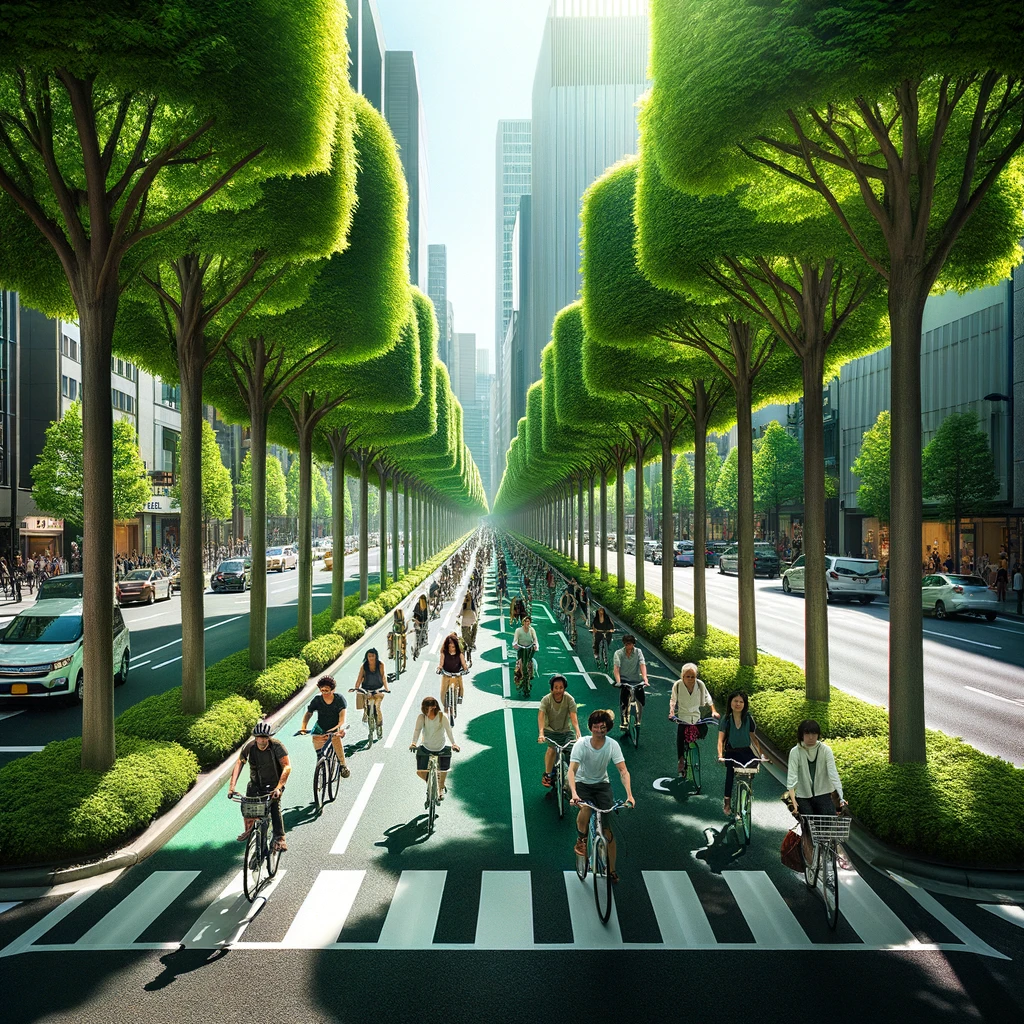
Not only does this improve the aesthetics of the bike lane, but it can also have positive impacts on the environment. Trees and other vegetation can help to reduce air pollution and provide shade, making cycling a more comfortable experience in hot weather. Additionally, greenery can help to reduce the urban heat island effect, which can make cities feel significantly warmer than surrounding areas.
Impacts of Bike Lanes on Commuting
One of the biggest benefits of bike lanes is that they can make commuting by bike a more viable option for a larger number of people. By providing a safe and efficient way for cyclists to travel, bike lanes can encourage more people to take up cycling as a means of transportation. This can have numerous benefits for the community, including reduced traffic congestion and improved air quality.
Bike lanes can also have a positive impact on the safety of cyclists. By providing a designated space for cyclists to ride, bike lanes can help to reduce the number of accidents involving cyclists. Additionally, bike lanes can help to reduce conflicts between cyclists and other road users, such as pedestrians and drivers.
When designing bike lanes, it’s important to consider factors such as urban design, complete streets, protected intersections, and signalized intersections. By taking a holistic approach to urban planning with cyclists in mind, cities can create a safer, more efficient, and more enjoyable environment for all road users.
The Ripple Effect: Broader Benefits of Modern Bike Lanes
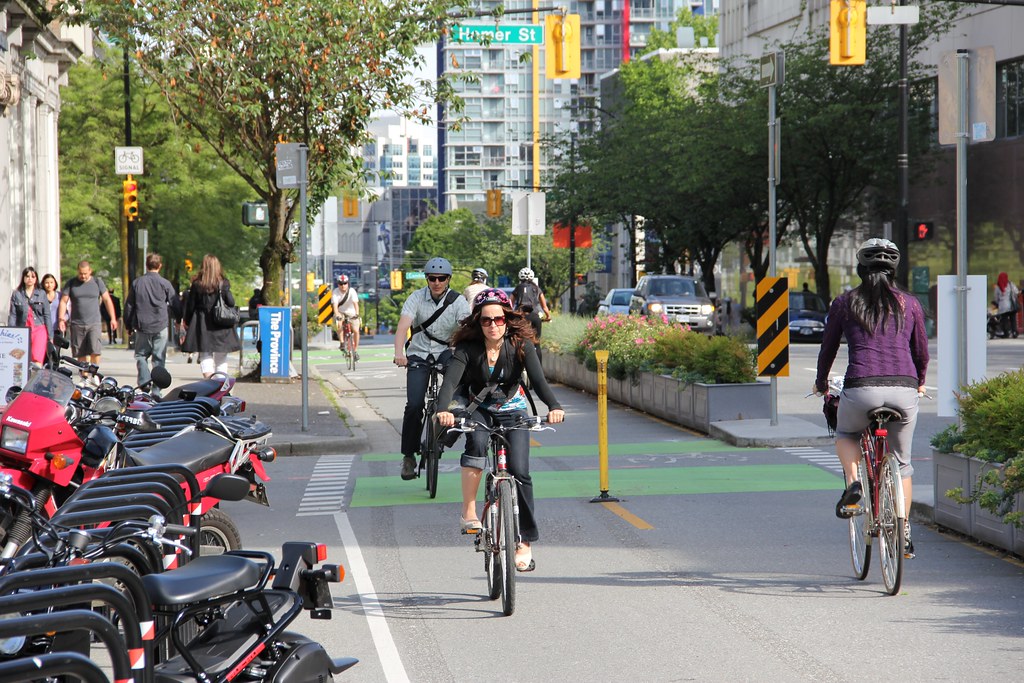
As cities across the world invest in modern bike lanes, they are not only providing safer and more efficient transportation options for cyclists, but also reaping a host of broader benefits. From reducing traffic congestion and air pollution to fostering a sense of community and promoting healthy lifestyles, modern bike lanes have a ripple effect that extends far beyond the cycling community.
From Smoother Traffic Flow to Reduced Emissions: The Environmental and Social Upsides
Modern bike lanes have a significant impact on traffic flow and air quality. By providing a dedicated space for cyclists, bike lanes reduce the number of cars on the road, easing traffic congestion and improving air quality. According to a study from Portland State University, installing bike lanes can also have positive economic impacts on local businesses along the affected streets.
Moreover, modern bike lanes can help cities meet their climate goals by reducing greenhouse gas emissions. By encouraging more people to cycle, bike lanes can help cities reduce their carbon footprint and improve air quality. In fact, a study published in the Journal of Transport and Health found that cycling infrastructure can have a significant impact on reducing carbon emissions.
Fostering a Bicycle Culture: How Bike Lanes Shape City Identity and Community
Modern bike lanes play a significant role in shaping a city’s identity and fostering a sense of community. By providing safe and accessible spaces for cyclists, bike lanes encourage more people to cycle, which in turn creates a sense of community among cyclists. Moreover, bike lanes can help promote a healthy and active lifestyle, which can have a positive impact on overall community health.
In addition, bike lanes can help create a more equitable and inclusive city. By providing a safe and accessible transportation option for everyone, regardless of income or ability, bike lanes can help reduce transportation-related disparities and improve access to jobs, education, and other opportunities.
Bike Lanes and Climate Change
As cities around the world strive to reduce their carbon footprint and meet their climate goals, modern bike lanes are emerging as a key solution. By providing safe and accessible spaces for cyclists, bike lanes can encourage more people to cycle, which in turn can help reduce greenhouse gas emissions and improve air quality. In fact, a study from the University of British Columbia found that bike lanes can have a significant impact on reducing carbon emissions, particularly when combined with other active transportation options like walking and public transit.
Overall, modern bike lanes have a ripple effect that extends far beyond the cycling community. By reducing traffic congestion, improving air quality, fostering a sense of community, promoting healthy lifestyles, and helping cities meet their climate goals, bike lanes are paving the way for a more sustainable and equitable future.
Cost-Effective Aspects of Bike Lanes
As a bike commuter myself, I know that one of the biggest concerns for many people when considering cycling as a mode of transportation is the cost. However, research has shown that bike lanes can actually be a cost-effective solution for cities and municipalities.
According to a study by Active Living Research, the cost of building bike facilities is relatively low compared to other transportation infrastructure projects. In fact, the study found that the cost of building a mile of bike lane is typically between $5,000 and $50,000, depending on the type of facility and location. This is significantly less expensive than building a mile of roadway or highway. For instance, the City of Portland estimated that to replace its extensive bicycle network, which includes more than 300 miles of bikeways, would cost $60 million (based on 2008 dollar value). Conversely, the same amount of investment would only suffice for the construction of a single mile of a four-lane urban freeway
In addition to the low initial cost, bike lanes can also have long-term cost savings for cities. For example, bike lanes can help reduce traffic congestion, which can save money on road maintenance and repair. Bike lanes can also help reduce air pollution, which can lead to health care cost savings for individuals and the community as a whole.
Another cost-effective aspect of bike lanes is that they can be designed to be low-maintenance. For example, using materials such as concrete or asphalt instead of painted lines can reduce the need for frequent repainting and maintenance. Additionally, using green infrastructure such as bioswales or rain gardens can help reduce stormwater runoff and maintenance costs.
Overall, bike lanes are an affordable and cost-effective solution for cities and municipalities looking to promote active transportation and reduce the overall cost of transportation infrastructure.
Bike Lanes and Parking
When it comes to designing bike lanes, parking can be a tricky issue. On one hand, cyclists need a clear and safe path to ride on, while on the other hand, drivers need a place to park their cars. Here are some considerations when it comes to bike lanes and parking:
- Parking-Protected Bike Lanes: One solution that has gained popularity in recent years is the parking-protected bike lane. This design places the bike lane between the curb and a row of parked cars, creating a physical barrier between cyclists and moving traffic. While this design can be effective in protecting cyclists, it does require the removal of parking spaces, which can be a tough sell in areas where parking is already at a premium.
Shared Lane Markings: In areas where parking cannot be removed, shared lane markings (also known as “sharrows”) can be used to indicate that the lane is shared by both cyclists and drivers. While sharrows do not provide physical protection for cyclists, they can help to remind drivers to share the road and give cyclists enough space.
Bike Lanes in Car-Free Zones: In areas where cars are not allowed, such as pedestrian-only streets or plazas, bike lanes can be designed to share the space with pedestrians. This design can be effective in creating a more connected and livable city, but it does require careful planning to ensure that cyclists and pedestrians can safely share the space.
Bike Parking: Providing ample bike parking can also help to support bike commuters. Bike racks, lockers, and other secure storage options can encourage more people to bike to work or other destinations, knowing that their bike will be safe and secure while they are away.
Conclusion
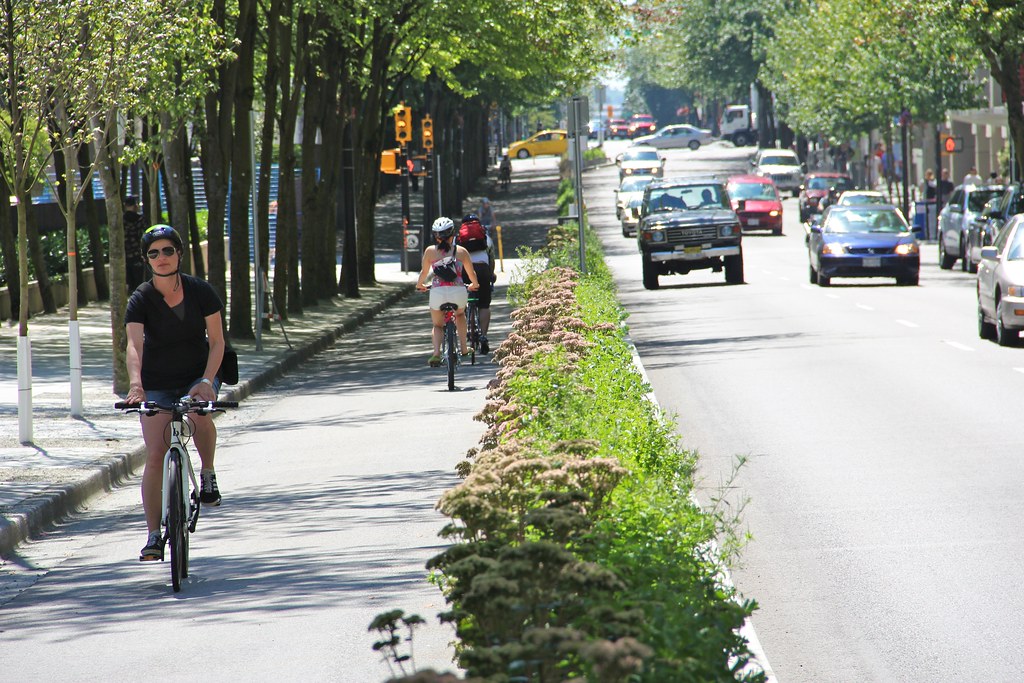
In conclusion, modern bike lanes play a crucial role in supporting bike commuters. With the increasing awareness of the benefits of cycling, it is important to create safe and accessible infrastructure for cyclists. Protected bike lanes, also known as cycle tracks or separated bike paths, have gained significant recognition and implementation in recent years. These lanes provide a dedicated space for cyclists, separated from motor vehicle traffic, which increases safety and encourages more people to cycle.
The design of bike lanes is also important. The World Resources Institute (WRI) has published a new guidebook for city leaders that lays out clear bike lane design principles based on decades of cycling and road safety experience. These principles include creating a connected network of bike lanes, designing for all ages and abilities, and prioritizing safety over speed.
Overall, creating safe and accessible infrastructure for cyclists is important for promoting cycling as a sustainable and healthy mode of transportation. By implementing modern bike lanes and following bike lane design principles, cities can pave a path for cyclists and support bike commuters.


